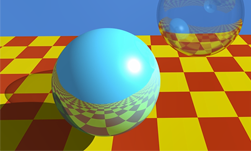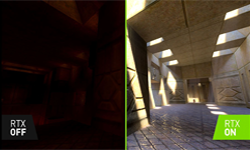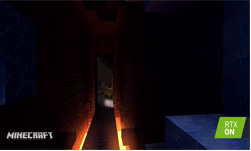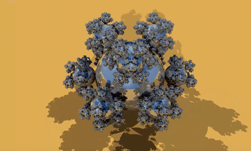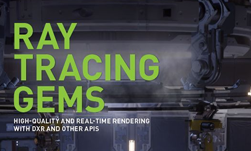In February 2019, NVIDIA published Ray Tracing Gems, a deep-dive into best practices for real-time ray tracing. The book was made free-to-download, in an effort to help all developers embrace the bleeding edge of rendering technology.
Ray Tracing Essentials is a seven-part video series hosted by the editor of Ray Tracing Gems, NVIDIA’s Eric Haines. The aim of this program is to make developers cognizant of various terms and concepts used in the field, while also inspiring them with dramatic and beautiful uses of the technology.
In Part 1: Basics of Ray Tracing, Haines runs through the basics of ray and path tracing. To begin, he defines a ray and notes how it is useful for different operations in computer graphics. Rays can be cast to test for shadows, for example. “In 1980, Whitted introduced the idea of recursive ray casting, known as ray tracing. Cook and others in 1984 explored how bursts of rays could create more elaborate effects, such as soft shadows and glossy reflections. Kajiya introduced the Rendering Equation in 1986, showing how it could be solved using path tracing,” explains Haines. “This whole field of ray tracing takes an extremely simple primitive – the ray – and explores how to most effectively use it to create images of unparalleled realism.”
Ray Tracing Essentials, Parts 2-7 will be published here on the NVIDIA Developer News Center.
Additional resources:
- A raytracing resources page
- The free Open Access book Ray Tracing Gems
- Ray Tracing Essentials Part 1: Basics of Ray Tracing
- Ray Tracing Essentials Part 2: Rasterization versus Ray Tracing
- Ray Tracing Essentials Part 3: Ray Tracing Hardware
- Ray Tracing Essentials Part 4: The Ray Tracing Pipeline
- Ray Tracing Essentials Part 5: Ray Tracing Effects
- Ray Tracing Essentials Part 6: The Rendering Equation
- Ray Tracing Essentials Part 7: Denoising for Ray Tracing
You can watch the all of the videos in the series on this YouTube Playlist.
